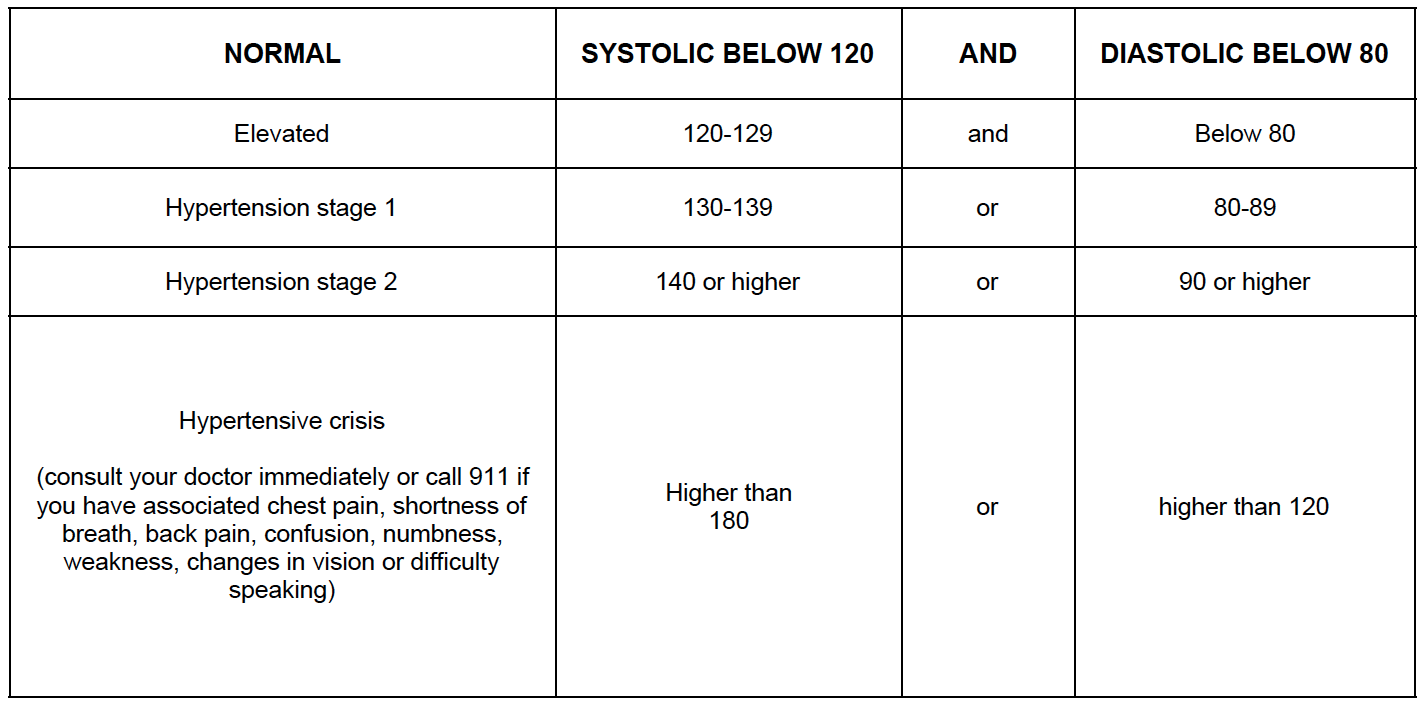At nearly every visit to your physician, one of the initial things you’ll experience is a blood pressure screening. This is an important first step in evaluating your health, but do you know what any of the numbers being measured mean? Below is a quick guide to help you with your next visit.
What is blood pressure?
This is the force of blood on the walls of your blood vessels. The top number is your systolic blood pressure, which is the pressure when your heart squeezes. The bottom number is your diastolic blood pressure, which is the pressure when your heart relaxes.
Most of us cannot feel or notice when our blood pressure is high and this can lead to heart disease, stroke, dementia, vision trouble, kidney failure, and other health problems. This is why high blood pressure is called the silent killer. The only way to know your blood pressure is to measure it with a blood pressure cuff. Every adult should have a blood pressure checked. Be advised that the goals are lower than they were a few years ago.

Consistently high blood pressure readings at home should prompt a visit to your primary doctor to obtain a tailored treatment plan. Besides medications, some ways to lower blood pressure are:
- Weight reduction. Even small amounts of weight loss can help greatly
- DASH diet (a diet rich in fruits, vegetables, lean proteins, low fat dairy, low saturated and total fat)
- Reduce salt intake
- Increase aerobic exercise
- Reduce alcohol intake
My hope is that with this knowledge, you are empowered to understand your results, ask questions and keep your health a top priority.



